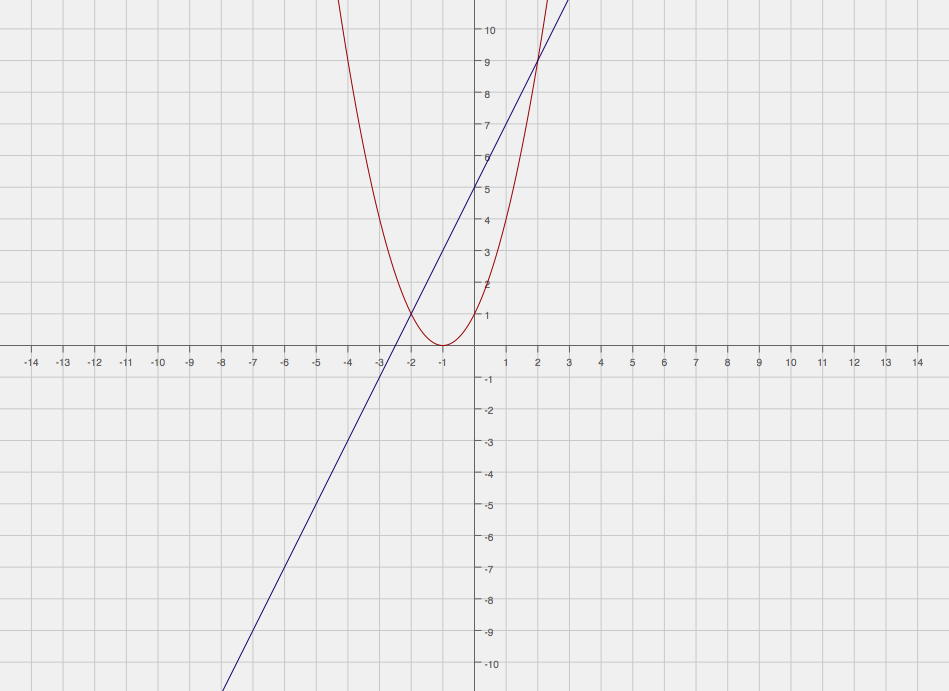Start by finding the intersection points.
#{(y = x^2 + 2x + 1), (y= 2x + 5):}#
Substitute the second equation into the first.
#2x+ 5 = x^2 + 2x + 1#
#0 = x^2 + 2x - 2x + 1 - 5#
#0 = x^2 - 4#
#0 = (x + 2)(x- 2)#
#x = -2 and 2#
#:.y = 2x + 5#
#y = 2(-2) + 5 and y = 2(2) + 5#
#y = 1 and y = 9#
The solution set is hence #{-2, 1}# and #{2, 9}#. The next step is doing a basic sketch of the graph. This is not what I'm going to do for this answer, but this is often a necessity when you don't have access to a graphing calculator.

So, our goal is to subtract the area of the lower graph, #y = x^2 + 2x + 1#, from the area of the upper graph, #y = 2x + 5#.
We do this by integrating.
Let's start with finding the area of the upper graph.
#int_(-2)^2(2x + 5)dx#
#=>(x^2 + 5x)|_(-2)^2#
#=> 2^2 + 5(2) - ((-2)^2 + 5(-2))#
#=> 4 + 10 - 4 + 10#
#=> 20#
Now for the lower graph.
#int_(-2)^2(x^2 + 2x + 1)dx#
#=>(1/3x^3 + x^2 + x)|_(-2)^2#
#=> 1/3(2)^3 + 2^2 + 2 - (1/3(-2)^3 + (-2)^2 - 2)#
#=> 8/3 + 4 + 2 + 8/3- 4 + 2#
#=>28/3#
Subtract:
#A = 20 - 28/3 = 32/3#
Hence, the area between #f(x) = x^2 + 2x + 1# and #g(x) = 2x + 5# is #32/3" units"^2#.
Hopefully this helps!


